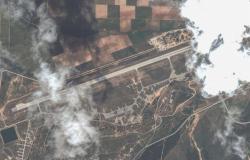A research team has found a potential formula to make CAR-T therapies against cancer work even better
A new study from the Herbert Irving Center, belonging to Columbia University (New York, United States) shows that Changing a single letter in the genetic code of T cells can make them substantially more potent when used as therapy. The main author of this research, Benjamin Izar, and his team, have used CRISPR editing (“cut-paste”) technique to enhance cells that act as medicines and eliminate cancer cells from the body.
Cellular therapies work by modifying the immune system’s own cells so that they eliminate tumors. They are a group of treatments that have been shown very good results, especially in some types of cancer that are difficult to treat. However, so far they can only be used in limited patient populations.
As Izar explains, “while some patients experience sustained responses over time, for the majority of cases this is not the case.” The unique microenvironment of each tumor and the complex dynamics of the relationship between cells and proteins that surround it can nullify the activity of therapies and their effectiveness.
“What we know is that the function of T cells, the ‘bricks’ with which these treatments are made, is “excellent indicators of whether the therapy will be effective or not in the patient”, indicates the researcher. His team was based on previous studies in which it has been analyzed how to modify T cells with CRISPR-Cas9 technology to increase their activity. Instead of manipulating entire genes, they have tried introducing small changes to the genome.
«Introducing specific variants could be used in cell therapies to make them more active and reduce the chances of failure, we can also make completely new products using specific proteins as a starting point,” he added.
The scientists edited multiple genes and generated thousands of variants, to select only those that served to increase the activity of T cells.
More than 10,000 different mutations
«We designed a library with more than 10,000 different mutations that we can generate», added Zachary Walsh, a doctoral student in the laboratory led by Izar. “We discovered some really interesting sets of mutations, which tend to cluster in a couple of regions of the same gene,” he says.
By introducing specific mutations in the PIK3CD gene into T cells, he made them become “super-soldiers” ccapable of eliminating melanoma and leukemia cells more effectively.
They also generated more antitumor cytokineswhich are considered beneficial in terms of response to cancer treatment.
To carry out this work they have had the support of the Tissue Immunity and Immunotherapy Initiative (HICCC), which aims shed light on how cancer and the immune system interact.
To generate “super-soldiers” that can be used on patients, more than one variant will most likely have to be introduced. “There is work to be done, and one of the first things we are going to do is study if there are combinations of mutations necessary to improve cell therapies,” says Izar.






